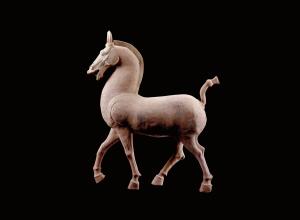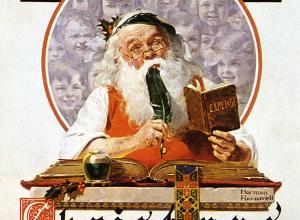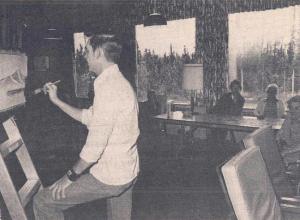Photographs from French photographer Samuel Gratacap’s series Empire(2012–14) will be projected on the windows of the ICP Museum at 250 Bowery, in conjunction with the current exhibition Perpetual Revolution: The Image and Social Change.
Art News
At a crossroads in the middle of his career, Jasper Johns (1930) found his way forward in part by looking to the work of Edvard Munch (1863–1944). Now a ground-breaking exhibition entitled Jasper Johns and Edvard Munch: Love, Loss, and the Cycle of Life examines how Johns, one of America’s preeminent artists, mined the work of the Norwegian Expressionist in the late 1970s and early 1980s as he moved away from a decade of abstract painting towards a more open expression of love, sex, loss and death.
Coinciding with the centennial of the 1917 Russian Revolution, Columbus Museum of Art presents Red Horizon: Contemporary Art and Photography in the USSR and Russia, 1960-2010, on view June 15 through September 24, 2017. This timely exhibition is drawn from two facets of Neil K. Rector’s world-class art collection: Soviet and Russian photography from the 1970s to the early 1990s, and the work of Moscow-based unofficial artists who came to prominence in the 1960s and 1970s.
In the early 1930s, Alexander Calder (1898–1976) invented an entirely new mode of art, the mobile—a kinetic form of sculpture in which carefully balanced components manifest their own unique systems of movement. These works operate in highly sophisticated ways, ranging from gentle rotations to uncanny gestures, and at times trigger unpredictable percussive sounds.
Frank Lloyd Wright at 150: Unpacking the Archive is a major exhibition on Frank Lloyd Wright that critically engages his multifaceted practice. Wright was one of the most prolific and renowned architects of the 20th century, a radical designer and intellectual who embraced new technologies and materials, pioneered do-it-yourself construction systems as well as avant-garde experimentation, and advanced original theories with regards to nature, urban planning, and social politics.
The Harvard Art Museums will present five distinct exhibitions this summer, featuring works drawn from a diverse range of geographic regions and time periods, including Imperial China, 14th- to 17th-century Iran and Central Asia, 19th-century Iran, pre- and post-revolutionary America, and contemporary America. While showcasing the diversity of the museums' collections, these exhibitions will present new research and scholarship and will encourage discussion about artists, artistic practice, culture, and collecting.
The October Revolution of 1917 changed the course of world history; it also turned Russia into a showcase filled with models. Every object and sphere of activity had to demonstrate how society could be remade according to revolutionary principles. It would take intensive experimentation and discussion to determine the shape of this unprecedented society. To be realized in any concrete way, communism had to be modeled and put on display.A rotating program of Soviet cartoons and documentaries is shown in a space that evokes an agit-prop train.
Deeply engaged in art history, Andrew Lord (British, born 1950) uses traditional ceramic forms and techniques that reference 19th- and 20th-century painting and sculpture. “In the 1970s,” Lord recalls, “I looked at paintings in Amsterdam and Paris and discovered Gauguin’s ceramics, which seemed to have meaning in a way I’d not seen before in ceramics.” Like Gauguin, Lord straddles the boundaries of fine art and craft, abandoning the functionality and practicality of his objects in favor of conceptual pursuits.
Featuring over 120 paintings, drawings, and historical documents related to the artist, Tarsila do Amaral: Inventing Modern Art in Brazil is a rare opportunity to experience the artist’s work, which is held mostly in Brazilian collections.
In an exhibition opening March 11, The Phillips Collection presents a major survey of drawings and “drawing paintings” by George Condo (b. 1957). An extraordinarily prolific painter, Condo is best known for his existential humor and unhinged pictorial inventions. His works synthesize disparate stylistic elements ranging from 17th century Venetian and Dutch painting through 20th-century Cubism, Surrealism, Abstract Expressionism, and Pop Art into singular works of art. Condo coined the phrases “Artificial Realism” and “Psychological Cubism” to describe this process.























